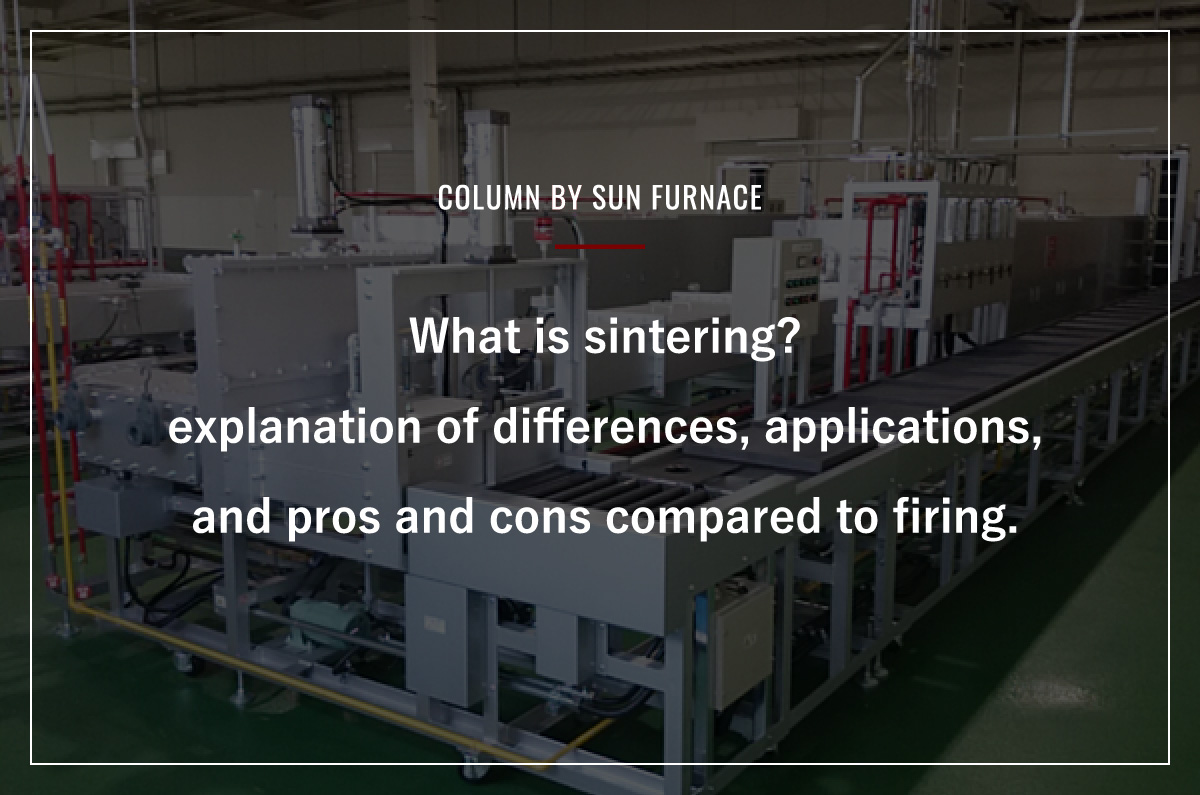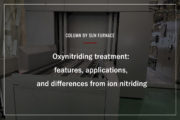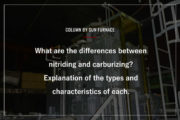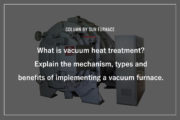We have designed and manufactured over 1500 industrial furnaces, catering to various industries such as automotive, steel, and chemical. With extensive experience and a proven track record in a wide range of furnace types, we offer a diverse range of solutions. In addition to industrial furnaces, we provide total support for related equipment and conveyors, and have successfully tackled a multitude of challenges based on different specifications and needs.
What is sintering? explanation of differences, applications, and pros and cons compared to firing.

Sintering is a metal forming process, similar to casting and forging.
It has the unique characteristic of being able to process a wide variety of materials.
By using powdered materials, it is an environmentally friendly method with minimal material waste.
It is commonly used in the production of machine parts for automobiles and other industries, and is capable of accommodating both small and large-scale production runs.
Understanding sintering can potentially lead to improvements in product quality and cost reduction.
In this article, we will provide detailed explanations of the characteristics, applicability, advantages, and disadvantages of sintering.
目次
Understanding sintering: What is it and what is the typical process?
Sintering is a method of forming metal or ceramic powder into one piece by heating it to a high temperature after molding the powder. The process involves bonding individual particles together.
This article will explain the basic knowledge of sintering and the contents of the process.
The difference between sintering and firing
Both sintering and firing are processes used to create products by heating materials such as metals or ceramics.
When materials are heated, the particles bond together.
Sintering is a process primarily used for metal powder materials, where the particles are bonded and shrunk together through heating.
On the other hand, firing is often used for ceramic materials and involves a chemical reaction at high temperatures to increase mechanical strength.
Types of powder used in sintering
There are various types of powders used in sintering, including metals, metal processing materials, ceramics, and composite materials.
| Material | Powder types |
|---|---|
| Ceramics | Alumina, zirconia, ferrite magnets, titanium nitride, silicon nitride, etc. |
| Iron-based metals | Stainless steel, carbon steel, tool steel, etc. |
| Non-ferrous metals | Nickel alloys, titanium alloys, cobalt alloys, etc. |
| Intermetallic compounds | Rare earth magnets, molybdenum disilicide, titanium aluminum, etc. |
| Composite materials | Cermet, superhard alloy, etc. |
| Others | Nylon, phenolic resin, polyethylene, etc. |
These materials are used in a wide range of industrial fields and mechanical parts, and their particle sizes are usually between a few microns and several tens of microns.
Typical sintering process
The general sintering process is divided into four stages
- Mixing and grinding stage
- Forming stage
- Debinding and sintering stage
- Processing and inspection stage.
Advantages and disadvantages of sintering
Let’s explore the sdvantages and disadvantages of sintering processing.
Advantages
Almost all powder metals can be sintered
Even materials with high melting points like tungsten and molybdenum can be sintered when block processing is challenging.
Less material loss
Machining inevitably generates material loss such as cutting chips and scrap material.
With sintering, as the material is in powder form, only the amount of material required for the product shape is used, minimizing material loss.
Higher yield compared to casting, resulting in reduced material costs.
The shape and composition can be freely determined
Sintering allows for shaping powder materials into arbitrary shapes.
Therefore, complex shapes that are difficult to machine or cast can be produced using sintering.
Moreover, sintering can be performed at lower cost than casting due to the lower processing temperature below the melting point of the material.
Disadvantages
The price could be a little higher
Powder materials, which are needed for sintering, may be more expensive per unit than block materials, and the cost of manufacturing for specific materials may be significant.
How to reduce material costs by taking use of the advantages of decreasing material waste is one important consideration.
Additionally, many situations call for equipment for final processing after sintering as well as for powder granulation or mixing prior to sintering.
It is crucial to thoroughly assess if sintered components are appropriate or whether other processing techniques should be chosen based on the product’s intended usage.
Types of forming methods prior to sintering
There are several types of shaping methods prior to sintering. Here are some examples:
- Press forming method
- Injection molding method
- Casting forming method
Press forming method
The main press forming method uses a mold for shaping.
It is the most commonly used method for sintering and uses a mold to shape the product.
After filling the mold with powder, the movable mold is pressed to shape it into the desired product shape.
It is occasionally necessary to employ lubricants to lessen friction between the powder and the mold.
Stearic acid, zinc stearate, and various lubricants are utilized, among others.
Increasing the pressure during pressing increases the density and strength of the product.
To improve the product’s strength and density, organic chemicals known as binders are occasionally used.
Injection molding method
One of the representative methods other than press forming is injection molding.
It is suitable for both metal powder (MIM: Metal Injection Molding) and ceramic powder (CIM: Ceramics Injection Molding) and is often used for small products with high production volume.
This method mixes high-temperature powder with plastic material and injects it into a mold with an injection machine, allowing for complex product shapes to be formed.
Casting forming method
Another method of shaping is casting (slip casting).
Casting is a technique similar to casting metal by melting it and pouring it into a mold.
Powder such as metal is mixed with a solvent to create a slurry, which is then poured into a mold, demolded, and dried.
This method is commonly used for sintering ceramics powder and has been used for the manufacture of pottery and tiles since ancient times.
However, the disadvantages are that the molding time is long and it is not suitable for mass production.
Gel casting is another method that has improved the disadvantages of slip casting. It has shortened molding time and allows for homogeneous density of molded products, and can be applied to a wider range of materials such as metals as well as ceramics.
Frequently asked questions about sintering
Q: What kinds of products can be made through sintering?
Metal components for equipment, such as those used in autos, are frequently made via sintering.
It is also frequently used to produce small, complex-shaped machine parts.
Additionally, sintering is utilized in the manufacturing of battery materials and ceramics.
Q: What methods are used to evaluate sintered materials?
Because it significantly affects the strength of sintered materials, density is a crucial component to take into account.
There are several methods for determining density, with the Archimedes method being the most widely used.
Other techniques include observing the material’s structure through a microscope and using scanning electron microscopy for even more detailed examination.
Q: Is it possible to plan for sintering?
Yes, it is.
San Furnace has a proven track record, with over 1500 industrial furnaces installed since our establishment.
We will first determine if your project is suitable for our sintering furnace and will conduct a hearing beforehand.
Please feel free to contact us to discuss your project’s requirements, including test conditions.
Summary
In this article, we have explained the basic knowledge of the sintering process, its flow, benefits, drawbacks, and applications.
Sintering is widely used for producing small machine parts from metal or ceramic powders due to its ability to mold products in intricate shapes.
It can handle both small-batch and large-scale production, has minimal material loss, and is an environmentally friendly process due to its low heating temperature compared to casting.
However, because it calls for turning materials into powder, it might be expensive, therefore it’s crucial to carefully consider the price beforehand.
San Furnace, an industrial furnace manufacturer, offers custom-made heating furnaces tailored to your specific needs, utilizing the knowledge and expertise gained from producing over 1,500 industrial furnaces.
We also provide free technical consultations, so please feel free to contact us with any inquiries you may have.
Check out San Furnace’s baking and sintering furnaces in detail



